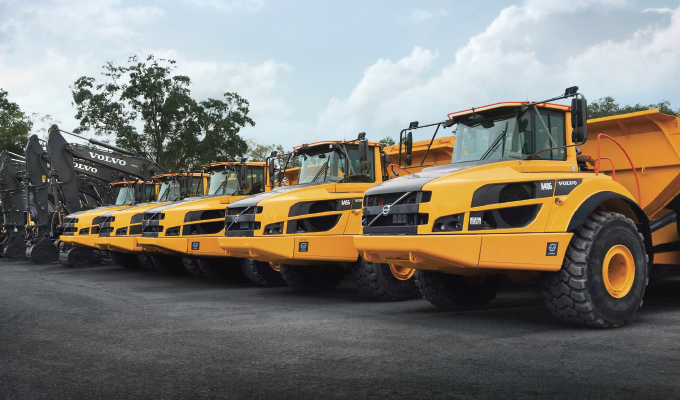Construction business owners and managers are increasingly interested in understanding the total cost of ownership (TCO) of their machines. It’s a more complicated equation than you may realize, but if you have access to the right tools—especially telematics data and software—the information is easily within reach.
In its simplest terms, you should calculate total cost of ownership as the cost of owning and operating a machine in dollars per hour, divided by what it produces in tons per hour. There are several ways telematics and software can help with all three parts of this equation: owning costs, operating costs, and productivity.
OWNING COSTS
Owning costs include the purchase price, interest, insurance, tax, residual value, and depreciation. The one OEMs can help customers control most is depreciation. Imagine two of the exact same machines doing the same amount of work on the same jobsite—but Machine A runs with 50% idle time and Machine B is idling at 33%. Machine A runs about 2,000 hours each year, whereas Machine B runs about 1,500. While it may seem small at first, the difference quickly adds up. After 5 years, Machine A has accumulated 10,000 hours with a true working time of 5,000 hours due to higher idling times. Machine B only has 7,500 total hours, also with a true working time of 5,000 hours.
The same work rate was achieved over the same period, but the difference of 2,500 lifetime hours can cut thousands from the resale value, depending on the machine size and type—all because of idle time. Advanced telematics services like Volvo’s ActiveCare Direct can help owners and operators monitor idle times and set goals for improvement.
OPERATING COSTS
Operating costs include fuel consumption, wear parts, preventive maintenance, and repairs. Using an advanced telematics service can reduce unplanned maintenance and repair costs by catching problems before they occur and more quickly diagnosing and solving bigger issues. It can also help customers stay on top of scheduled maintenance with reminders and alerts.
Reducing operator misuse is another big advantage of the reports that typically come from telematics. Five of the most common mistakes are hot turbo shutdowns and high-speed shifts on wheel loaders, excessive service brake use and overuse of differential lock engagement on haulers, and misuse of excavator work modes. Identifying these and other errors, then training operators to avoid them can save significantly on operating costs, thereby reducing a machine’s TCO.
PRODUCTION
Maximizing production in tons per hour is what every owner and operator strives to do. A helpful tool in this arena is site simulation, which can help managers right-size their fleet for the job. When you know what routes, distances, gradients, fuel usage, and hours are involved, you can choose which equipment fits that jobsite best. This will save machines from being used inappropriately, which decreases their value.
Many OEMs also offer helpful tech solutions that give operators instantaneous data and insights to help them improve productivity. For example, Volvo CE offers Dig Assist, Load Assist, Haul Assist, and Compact Assist. Haul Assist is particularly helpful in monitoring the productivity part of the TCO equation because it shows productivity data on a hauler’s in-cab display, so the operator can watch production numbers and tons per gallon in real time, comparing against daily goals. It also feeds into a telematics portal so the fleet manager can watch trends and set goals for improvement.
SOLVING FOR X
Many customers try to evaluate TCO in one way or another. Some use very few data points, and some have very structured programs using all available data. One major benefit to measuring TCO is visibility to machine performance. This gives you the ability to grab the low hanging fruit. As your crew progresses and you continuously measure TCO, you’ll be able to improve your machine purchase process. This can help you identify the best machine, warranty timeframe, maintenance procedures, operator training, machine disposal process, and so on to get to a truer TCO number.
CLOSING THOUGHT
As you can see, telematics data and software support not only help you calculate TCO but can also help you control it. Measuring and adjusting things like fuel usage and utilization helps maximize efficiencies and decrease TCO, so don’t assume buying the latest machine means you can “set it and forget it.”
About the Author:
Jim Bretz is the director of service & solutions for Volvo Construction Equipment, responsible for leading the Americas Region in product development, launches and long-term strategy. Jim is passionate about new programs and thinking as related to customer telematics programs, having spent time as a senior telematics support specialist before moving to director level positions.
Modern Contractor Solutions, August 2022
Did you enjoy this article?
Subscribe to the FREE Digital Edition of Modern Contractor Solutions magazine.



